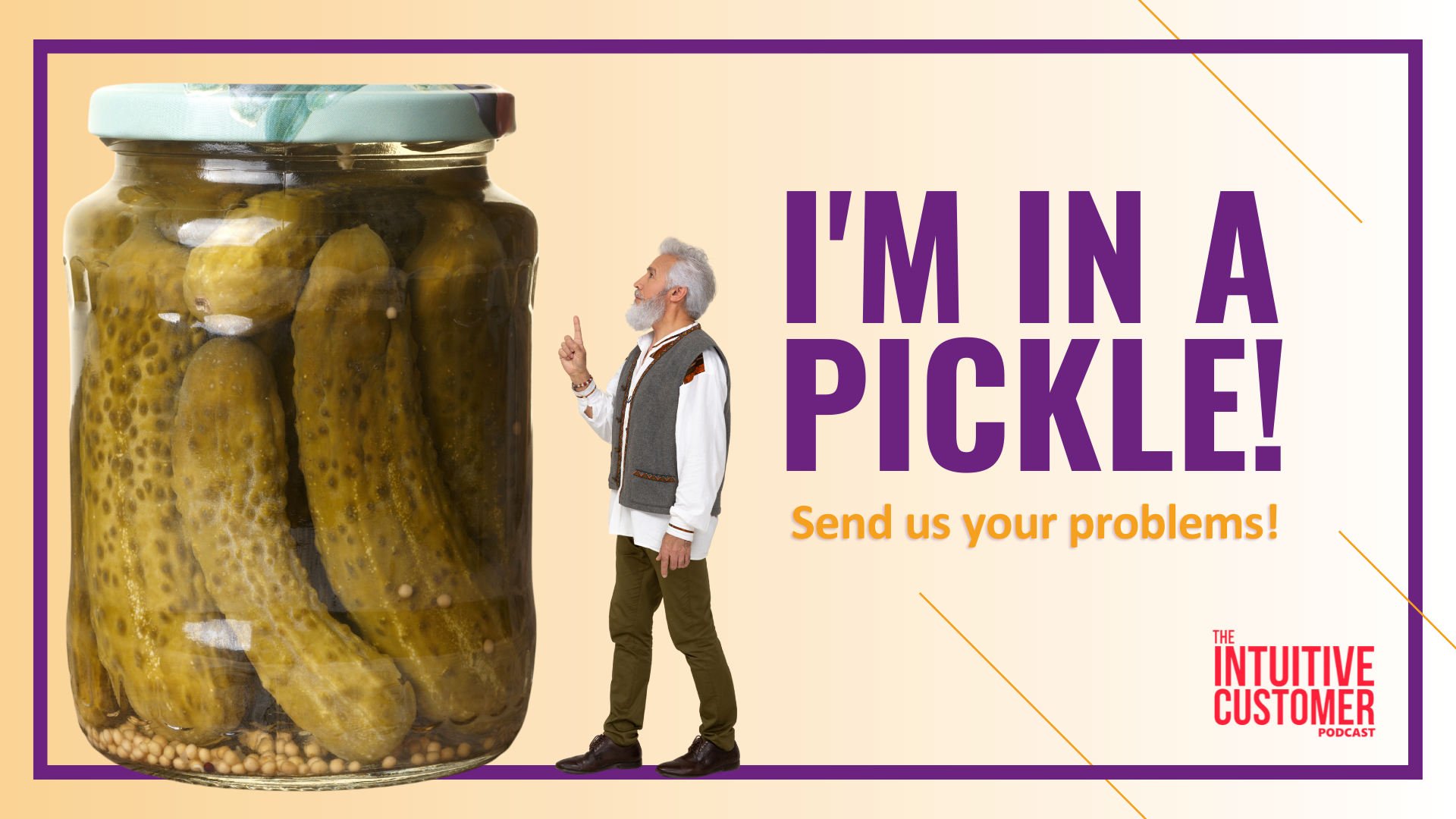How do you build a long-term relationship with customers? Tina works for an engineering company in Australia and recently joined the New Zealand office. Tina’s key focus is on Customer Experience and development, and she wants her team to change their transactional approach to customer strategy. So, today, we will talk about convincing people that having a relationship with customers is a good idea.
Tina wrote to us on the podcast about this pickle she is in, and it’s interesting. She also explained the company has engineers and technicians serving in dual roles because “customers do not want a sales relationship.” I have run across this attitude, too. Some types of industries buy into the customer relationship concept more than others. For example, hotels and hospitality get it straight away. Other firms, not so much.
So, when I heard Tina’s company was an engineering firm, I thought, “well, that sounds about right.” Engineers are brilliant and excellent at what they do, but they also have a specific approach to solving problems, and it’s definitely on the rational side. That approach is crucial to engineering, but the rational approach is a big mistake for customer relationship management.
My global Customer Experience consultancy did some work with a water utility in the U.K., so I am empathetic to Tina’s pickle. The water company had promoted an engineering guy to running customer experience. To make a long story short, I wasn’t sure that my message about the emotions of Customer Experience was getting anywhere with him. Or at least I didn’t think so until I got his phone call after his experience at the petrol station. Sparing you the details, let’s say after a series of things that occurred in his interaction there, he was a convert. Moreover, having seen the error of his ways, he was a disciple.
The Power of Storytelling
Thinking back, we got through to him by telling stories. However, we mixed in more than that, too. When you’re persuading anyone, you need to meet them where they’re at, and the calculations-based engineers needed evidence, too, for their rational side. I would create a spreadsheet showing long-term relationships and their profitability in Tina’s case. I would also show one with new customer acquisition costs compared to keeping a current customer. These spreadsheets also tell a story. So, if you can create a numbers-based story for numbers-oriented people, that will compel them. Stories will help solidify it and best practices from other organizations in their industry.

Another approach Tina could use is to turn the question around for the engineers in her firm regarding their suppliers. For example, if the team has a vendor they have used a lot for many years, ask them why. The engineers will likely respond first with a rational reason. However, if you dig deeper and ask the question another way, you will uncover a relationship. For example, ask them about a time when there was a problem and what happened. In that case, you might hear that the engineer was pleased or felt better because the vendor resolved the issue quickly or that the engineer appreciated that the vendor cared about the problem. “Pleased” and “appreciated” are relationship words. If you can find them used in a conversation about the engineer’s customer relationship, it will help the engineers see the value of relationships in experiences.
Relationships Evoke Emotions That Work for Your Bottom Line
Our research shows that appealing to emotions works. For my third book, The DNA of Customer Experience: How Emotions Drive Value, we undertook two years’ worth of research with London Business School to identify 20 emotions that drive and destroy value.

From this discovery, we developed the Emotional Signature® research. With the Emotional Signature, we learned how to discover customers’ hidden needs, even those hidden from the customers themselves. Moreover, when you know to evoke customers’ emotions in valuable areas, you see how that translates to your bottom line. And, Voila! That’s the proof. By showing naysayers the science behind the numbers and then combining it with stories, you show them the reasons and results of developing relationships.
Moreover, firms with better relationships with their customers will also understand what they want right now and what they will want next. This understanding will drive developing new solutions that give you a competitive difference. Your relationship with customers will mean you know them better than the competition and put you ahead on the innovation curve. Then, when you articulate that in numbers, the results make your story even more compelling.

What Should Tina Do?
We have a few suggestions for what Tina can do to convince people that having a relationship with customers is a good idea. First, Tina should ask how the most successful employee in the team does this. For example, who is the top salesperson/customer manager? Do they sell through having a relationship with the customer? How long have they been dealing with these clients? In my experience, relationships are key. Also, the people with the best emotional intelligence have the best relationships, and those customers in these relationships tend to spend the most money. In addition, Tina could find out what engineering firms worldwide are doing in this area and how they handle customer relationships.
Tina should also consider strategic differentiation. If Tina’s engineering solutions or consulting are significantly different from the competition, their firm is in a strong position in the market. However, there is always a danger of commoditization in an industry. Sure, branding can help fight it, but the years of relationships protect their market share.
We did some work with the Maersk Line, the largest container shipping company in the world. We did some work with them a little while ago, and they improved their Net Promoter Score®
by 40 points over 30 months. Perhaps more importantly, this improvement led to a 10 percent rise in shipping volumes. Logistics, like engineering, is a left-brain process, and therefore the culture from a left-brain perspective is similar to that engineering culture. We were able to show the leadership what was happening with customers on the front lines by pretending to need to ship goods in a container and recording our interaction. Suffice it to say that most of them had their heads in their hands by the end of the recording. The realities of a transactional approach were too much for them to bear, and they saw the need for change.
Everything we talk about in this newsletter is about dealing with human beings. Building healthy relationships is what you are doing. Per HelpGuide.org, when we build relationships in our personal lives, we should do the following:
- Spend quality time face-to-face.
- Stay connected through communications.
- Keep physical intimacy alive.
- Learn to give and take in your relationship.
- Be prepared for ups and downs.
Except for #3, Tina should apply these to business relationships. You need to spend time with your customers in person. You also need to communicate and build trust with them. There are times when you will compromise and times when the customer does. Also, there are times when the business relationship is doing great and times when it is under threat, so you need to be prepared for that. Tina should find ways to incorporate these concepts into the customer strategy and company culture.

Humans evolved to have interpersonal relationships. Now, we have them in business, too. Moreover, we rely on much of the same cognitive machinery to handle both types. So, it’s not surprising that there are parallels between managing your interpersonal relationships and your business relationships.
However, since we’re dealing with some left-brained, rational thinkers, are there ways that Tina can break this down into practical tactics? For example, if Tina wants her engineers to make people feel more secure but the engineers are getting squirmy about the touchy-feely concept, say, “call your clients to check in about how things are going and if they need anything.” In other words, move down to a concrete level of allowing opportunities for contact, which will then facilitate a relationship.
The area that most organizations fail on is communication. However, communication is a vital part of building a long-term relationship. So, Tina might consider talking about improving communication more than building a relationship. Then, you can build upon that incrementally to relationships.
In other words, it’s best if Tina can get people excited about creating relationships. However, she could also fall back to a position that facilitates forming relationships as an intermediary step if she encounters resistance. Taking a stand on company policy for customer communication could be a way for her to get people on board with understanding how relationships can benefit them in the long run with baby steps.
Tina’s pickle is not uncommon. In some industries, the idea of appealing to emotions and building relationships sounds like something that “other companies need to do.” However, if you get under the skin of any business relationship, even those associated with engineering, you will undoubtedly find an emotional connection.
I hope that our advice for Tina can help you, too. However, if you have a different pickle in your customer strategy, please contact us and tell us about it at www.beyondphilosophy.com./pickle. We would love to hear about it and see if we can help.
There you have it. No promotions, no gimmicks, just good information.
Think reading is for chumps? Try my podcast, The Intuitive Customer instead. We explore the many reasons why customers do what they do—and what you should do about it. Subscribe today right here.



